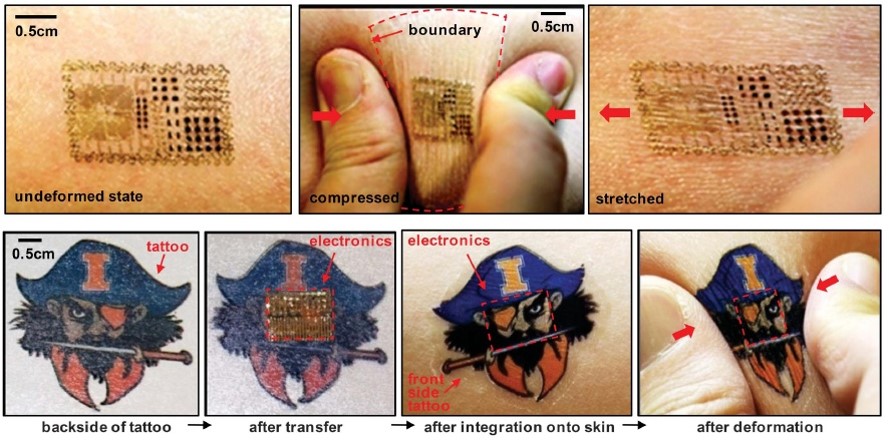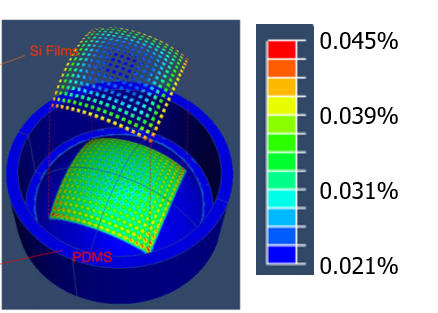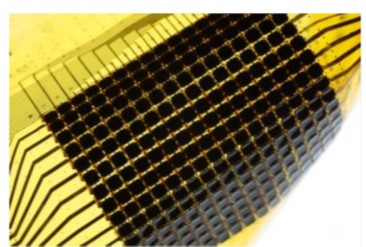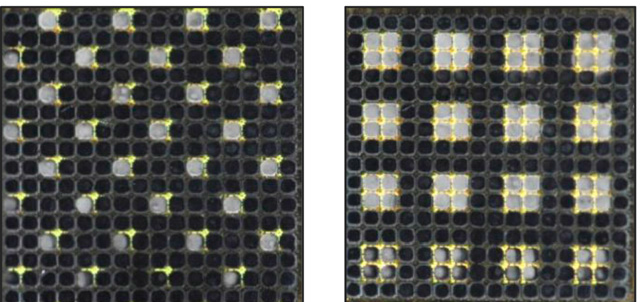Wang's Research Group
Mechanics of Bio-Structure and Bio-Mimetics
Biology is soft, elastic, and curved; electronic devices are not. Recent advances in mechanics and materials provide routes to integrated circuits that can offer the electrical properties of semiconductor technologies but with the ability to be stretched, compressed, twisted, bent, and deformed into arbitrary shapes. The result is a class of strechable and flexible electronics that overcomes the fundamental mismatch in mechanics and form between electronics and biology to enable important biomimicking smart systems, bio-integratable electronic interfaces/sensors, and portable healthcare devices. Below are a few representative examples of our previous work:
1. Epidermal Electronic System:
A class of ultra-thin electronics that is as soft as the human skin that can mount onto the epidermis just like a kid's temporary tattoo. They offer intimate electronics-skin interface to enable portable sensing, actuating and human-machine interfacing. Read more.
Similar concepts were applied to enable medical/surgical tools for treating cardiac arrhythmias (read more).

2. Electronic Eye-ball camera:
A camera that configures arrays of micro photodectectors onto a hemspherical focal plane (left) to mimick the imaging fucntion of the human eye (middle). This setup enables a wide field of view and low aberrations with simple, few-component imaging optics. The critical challenge is in mapping brittle photodectectors from a planar wafer onto the hemespherical geometry. Carefully designed processes via mechanics simulations (right) ensures that critical electronics componenets remains intact during this large deformation mapping.
Read more.



3. Artificial camouflage:
An artificial flexible camouflage skin that can detect ambient light patterns and change its color accordingly. Read more.



